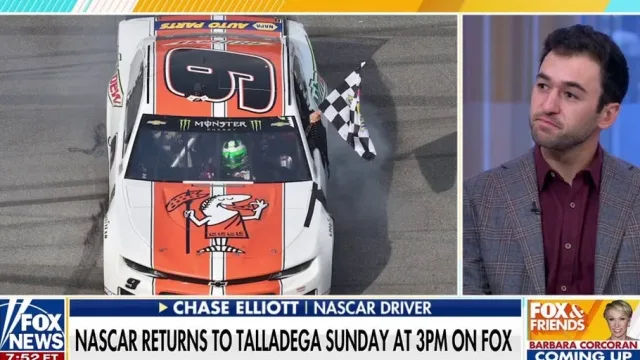Last fall, during a pivotal race at Talladega, NASCAR Cup Series driver Chase Elliott found himself caught in an unparalleled disaster. With playoff hopes on the line, Elliott witnessed a cascade of 28 cars morphing into a chaotic wreckage — one of the largest in the speedway’s history. Amidst the ensuing confusion and the ensuing stranding of drivers in their wrecked machines, what transpired after the disaster felt as frustrating as the catastrophe itself for Elliott and many others. This unforgettable moment seared itself into their memories long after the conclusion of the race.
This pivotal race was the last opportunity for a wildcard victory for either Elliott or Chase Briscoe. The aftermath of the collision however became a major point of discussion. Back in the day, the DVP rules were unclear, and only Elliott and Briscoe were towed back to their pit stalls to replace tires and perform repairs. The situation was a manifestation of disorganized chaos, characterized by numerous wrecked vehicles and stranded drivers right on the track. Despite being amongst the few who could continue the race, Elliott confesses that NASCAR was clueless about managing the situation.
“We looked like a bunch of clowns,” asserted Elliott while recalling the incident during an interview with Fox’s Bob Pockrass. “There were 10 of us sitting down there in the grass. And we were all arguing, pleading our case, yelling, and screaming. Just silly.” His candid recounting paints a clear picture of the pandemonium that ensued as drivers vied for attention from the overwhelmed racetrack workers.
The disarray was aptly captured in the No. 9 team radio communication. The frustration was palpable in Elliott’s response when Spotter Trey Poole queried about the situation: “Everybody’s just spinning their wheels, turning in circles, can’t go anywhere. Stuck in the grass. Stuck on the asphalt.” The racetrack workers struggled to coordinate recovery efforts amidst the wreck, leaving drivers increasingly frustrated and stranded.
Central to the controversy was NASCAR’s Damage Vehicle Policy, which has thankfully undergone significant changes. Now, cars with all four tires flat will be towed back to the pit stalls, while those requiring extensive repair will be driven to the garage. Teams can perform repair work without time constraints and have the cars back on track. There’s only one catch: the car needs to maintain a minimum speed post-repairs and it’s a one-time deal.
“I think at that point in the season, they were just trying to figure out what direction to go with it and how to navigate that. At least there seems like there’s a better direction from the tower as to what the track workers are supposed to do now”, reflects Elliott on the improvement he witnesses in NASCAR’s decision to amend the DVP rules. Although Kyle Busch had some trouble understanding the rules, Kyle Larson and his team expertly maximized the revised DVP policy at Darlington Raceway.
After only running four laps at Darlington, Larson lost control of his No. 5 Chevy and smashed into an inside wall. Ideally, it would have meant the end of the race for his team. However, they worked for two hours in the garage and had the car back on the track. Despite no track position or points to gain, they managed to gain considerable experience dealing with such situations. This newfound knowledge might provide an edge over the competition in future races.
In summary, NASCAR’s previously chaotic management of disaster scenarios like the one at Talladega prompted sharp critique from drivers like Chase Elliott. While such an intense past experience still resonates, important changes in policies and management strategies now provide a glimmer of hope, if not assurance, for drivers caught in similar predicaments.
